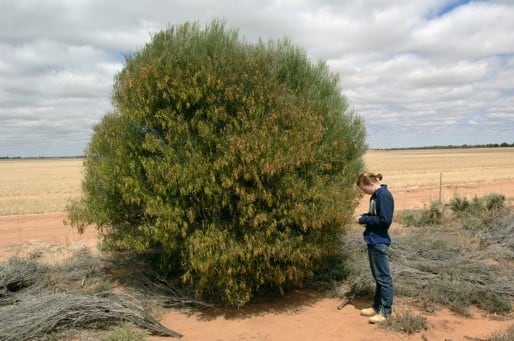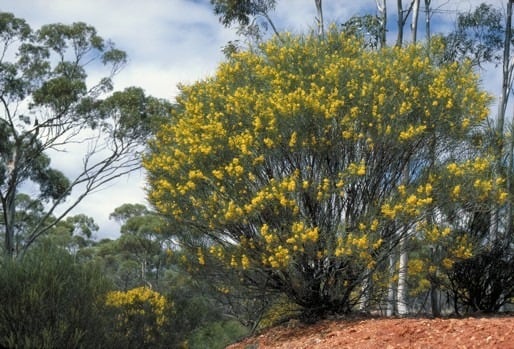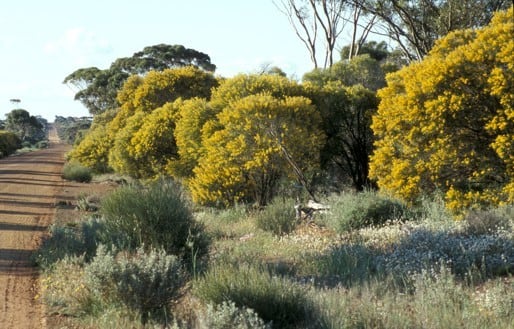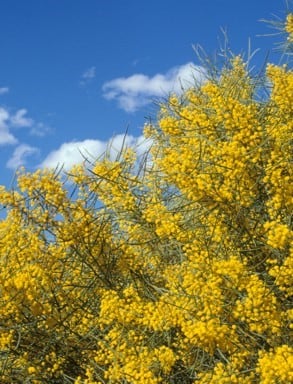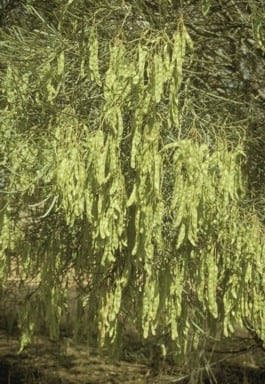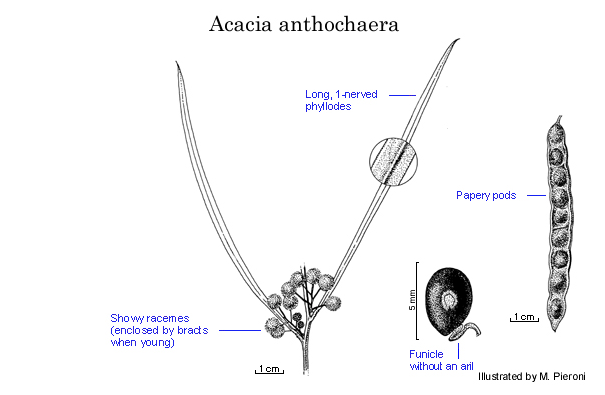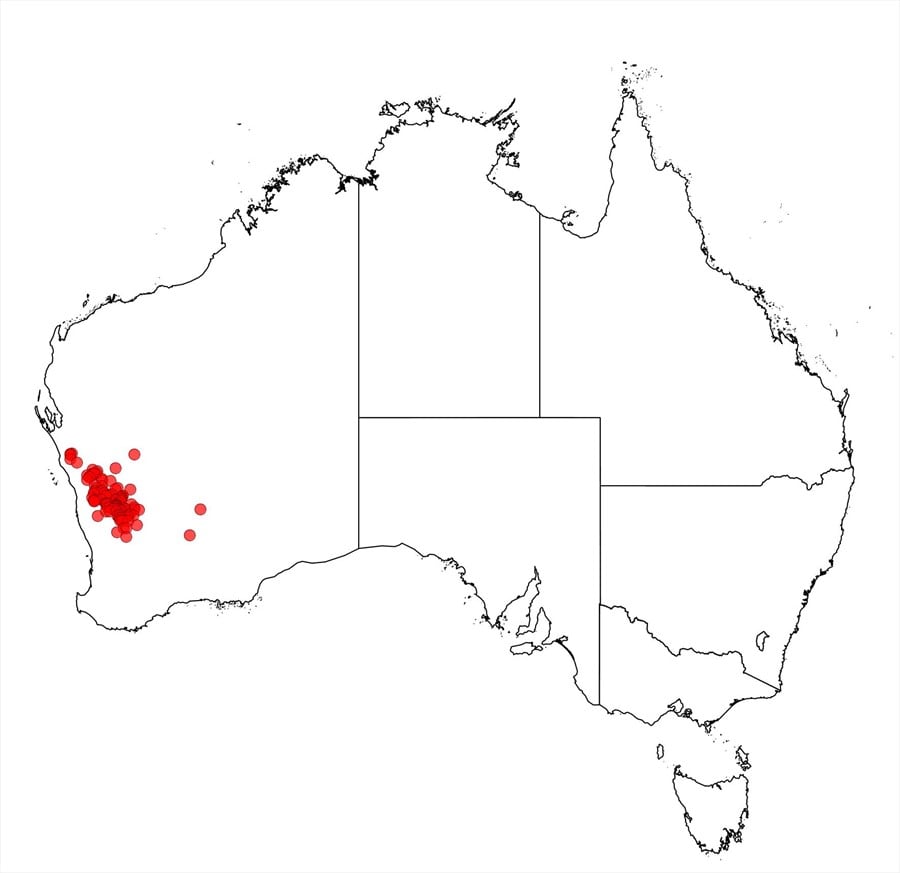Acacia anthochaera Maslin
WATTLE
Acacias of Australia
Common Name
Kimberly’s Wattle
Family
Fabaceae
Distribution
Occurs from near Yuna SE to Cowcowing, and near Galena and Karroun Hill, south-western W.A.
Description
Dense, commonly rounded, multistemmed, glabrous shrub or tree 2-5 m high, sometimes to
7 m. Bark grey, fissured on trunks and main branches. Branchlets angled or flattened at extremities; cuticle often white. Phyllodes mostly ascending to erect, narrowly linear, straight to shallowly incurved, (7–) 9–15 (–18) cm long, 2–5 mm wide, acute, often shallowly recurved at apex, thin, flexible, green or subglaucous, 1-nerved; lateral nerves obscure or absent. Inflorescences 4–9-headed racemes, enclosed when young by imbricate bracts; raceme axes (4–) 7–15 (–22) mm long; peduncles 6–12 (–15) mm long, slender; heads prolific, globular, 25–35-flowered, bright light golden, fragrant; bracteoles absent. Flowers 5-merous; sepals free. Pods narrowly oblong, to 8.5 cm long, 5–8 mm wide, chartaceous, light brown. Seeds longitudinal, oblong to elliptic or ovate, 4–5 mm long, dull, dark brown to blackish, yellowish at centre, exarillate.
Habitat
Grows in flat, low-lying areas, in red-brown sand or loam, in woodland or shrubland.
Specimens
W.A.: W of Kalannie (intersection of Warren and Dalwallinu North roads), G.Craig 1614 (MEL, PERTH); 24 km N of Murchison R. on North West Coastal Hwy, B.R.Maslin 3149 (PERTH); 7.5 km from Morawa towards Three Springs, B.R.Maslin 4270 (CANB, DNA, MO, PERTH); 5 km E of Karroun Hill, P.Roberts 223 (PERTH); Cowcowing, F.Stoward 3120 (PERTH).
Notes
A member of the ‘A. prainii group’, until recently regarded as a long phyllode variant of A. hemiteles, a species distinguished by its shorter stature, smooth bark, and shorter, broader, sometimes coarsely pungent phyllodes. A few herbarium specimens from the zone of geographical overlap of the two species, i.e. between Beacon (c. 55 km due NE of Koorda) and Morawa, suggest that hybrids may occur (e.g. about 15 km NW of Kalannie, B.R.Maslin 3977, PERTH).
In phyllodes and sometimes in habit A. anthochaera may resemble A. aestivalis which has light golden, appressed-puberulous raceme axes, united sepals and seeds with a long, red-brown funicle and a thick aril.
FOA Reference
Data derived from Flora of Australia Volumes 11A (2001), 11B (2001) and 12 (1998), products of ABRS, ©Commonwealth of Australia
Author
Minor edits by J.Rogers
B.R.Maslin
This identification key and fact sheets are available as a mobile application:
URL: https://apps.lucidcentral.org/wattle/
© Copyright 2018. All rights reserved.
